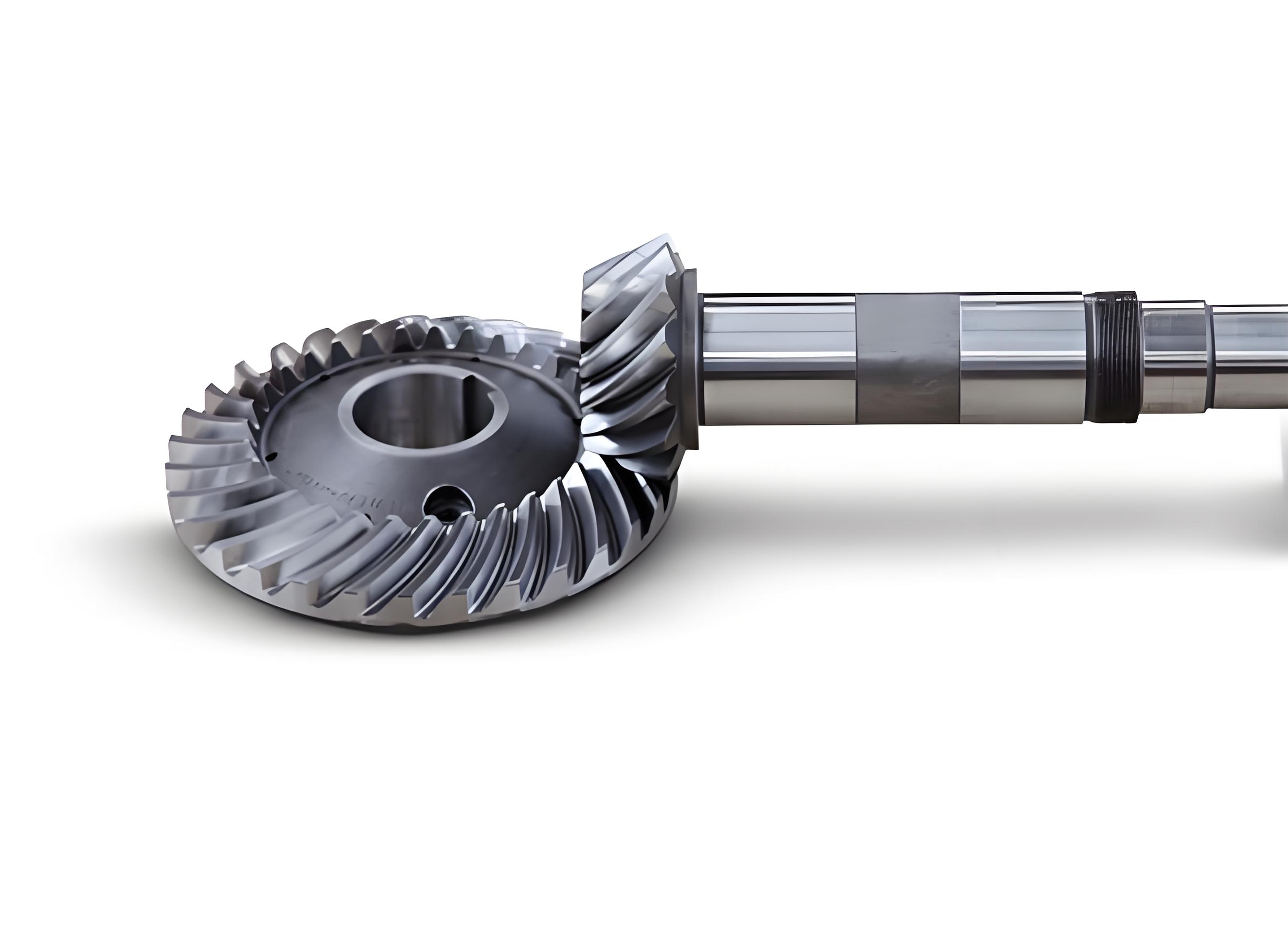Spiral bevel gears are critical components in aerospace, marine propulsion, and heavy machinery due to their high load capacity and smooth operation. However, their complex meshing dynamics and susceptibility to damage under harsh working conditions necessitate robust fault diagnosis methods. This study proposes a novel approach combining modulation signal bispectrum (MSB) and convolutional neural networks (CNN) to enhance the recognition accuracy of spiral bevel gear damage severity.
1. Theoretical Framework
1.1 Modulation Signal Bispectrum (MSB)
The MSB extracts nonlinear coupling features from vibration signals while suppressing Gaussian and non-Gaussian noise. For a discrete signal \( x(t) \), its Fourier transform \( X(f) \) is defined as:
$$ X(f) = \sum_{t=-\infty}^{\infty} x(t)e^{-j2\pi ft} $$
The MSB of \( x(t) \) is expressed as:
$$ B_{MS}(f_c, f_x) = E\left[ X(f_c + f_x)X(f_c – f_x)X^*(f_c)X^*(f_c) \right] $$
where \( f_c \) represents the carrier frequency, \( f_x \) denotes the modulation frequency, and \( E[\cdot] \) is the expectation operator.
1.2 Convolutional Neural Network (CNN)
The CNN architecture consists of convolutional layers, pooling layers, and fully connected layers. The output of the \( l \)-th convolutional layer is:
$$ a_j^l = \sigma\left( \sum_{i \in M_j} a_i^{l-1} \ast \omega_{ij}^l + b_j^l \right) $$
where \( \sigma \) is the ReLU activation function, \( \omega_{ij}^l \) denotes convolutional kernels, and \( b_j^l \) represents biases.
| Layer | Feature Maps | Kernel Size | Activation |
|---|---|---|---|
| Convolution 1 | 8 | 3×3 | ReLU |
| Max Pooling 1 | 8 | 2×2 | – |
| Convolution 2 | 16 | 3×3 | ReLU |
| Fully Connected | 32 | – | Softmax |

2. Methodology
- Data Acquisition: Collect vibration signals from spiral bevel gears under three states: healthy, partially broken, and fully broken teeth (sampling rate: 3.2 kHz).
- MSB Feature Extraction: Compute MSB bispectrum maps for 1,024-sample segments. Convert 3D MSB plots to 2D RGB images (128×128 pixels).
- CNN Training: Optimize hyperparameters (learning rate: 0.0001, batch size: 50) using 1,050 samples (350 per state).
3. Experimental Validation
Comparative analysis with traditional methods demonstrates the superiority of the MSB-CNN approach:
| Method | Accuracy (%) | Training Time (s) |
|---|---|---|
| MSB + CNN | 99.91 | 97 |
| Raw Signal + CNN | 93.53 | 107 |
| MSB + SVM | 99.42 | 2,374 |
The confusion matrix for spiral bevel gear fault classification reveals near-perfect separation between damage states:
$$ \text{Confusion Matrix} = \begin{bmatrix}
350 & 0 & 0 \\
0 & 349 & 1 \\
0 & 0 & 350
\end{bmatrix} $$
4. Conclusion
The integration of MSB and CNN provides a noise-resistant solution for spiral bevel gear fault diagnosis. Key advantages include:
- Automatic feature learning from bispectral maps
- Superior accuracy (99.91%) compared to time-domain CNN and SVM
- Efficient computation (97s training time)
This methodology significantly improves maintenance strategies for spiral bevel gears in critical industrial applications.
